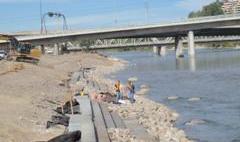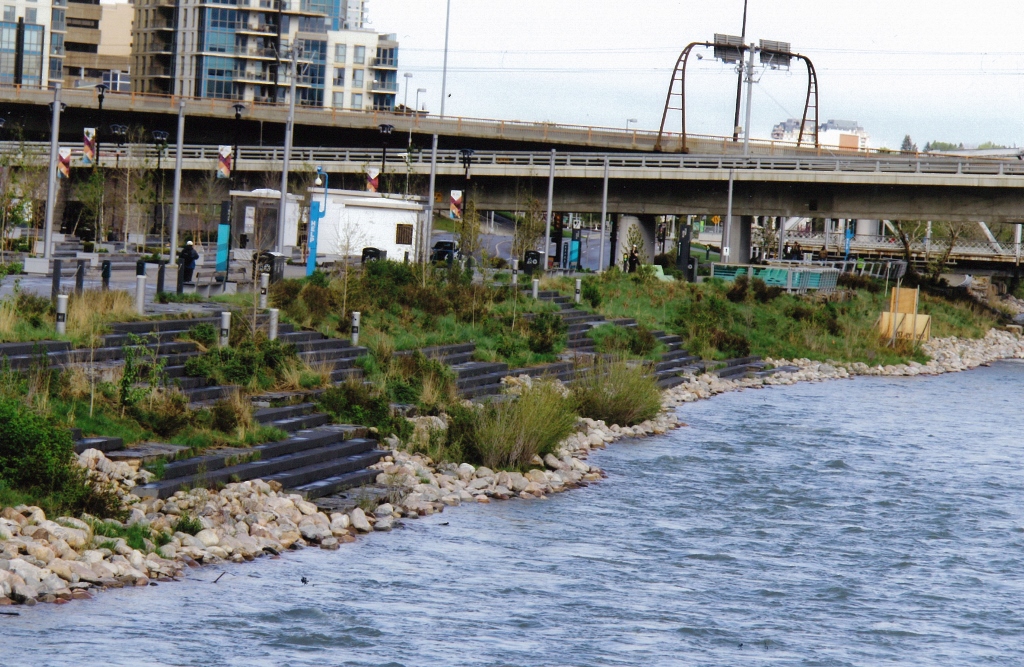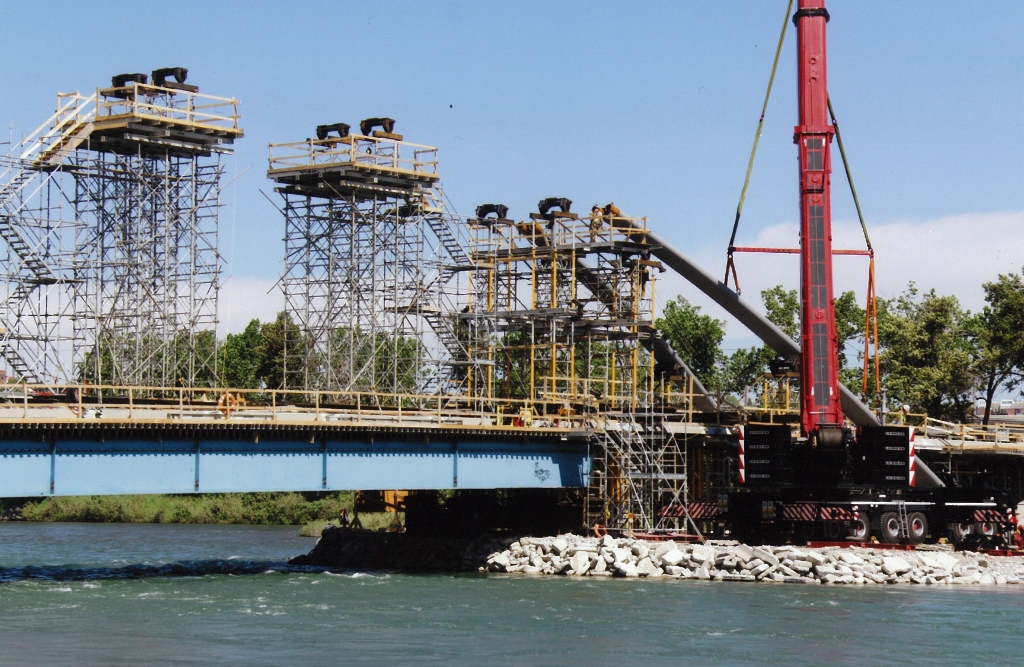Markets
- - Pipelines
- - Mines
- - Infrastructure
"You have been selected as a well qualified expert with the necessary independence and integrity to carry out an assignment on behalf of both parties."
-City of Calgary / Lafarge Canada Bridge Impacts / Floodplain Studies

Infrastructure
Infrastructure Resume
For historic transportation reasons, most major inland urban centers are located on rivers. Early settlers were not concerned about or were not aware of the impact of floods. With a small population or boats, they had no need to efficiently transport people across rivers via bridges.
As the cities grew and encroached on the rivers, hydrotechnical design challenges associated with bridges, floodplain development, and riverbank stabilization evolved and grew in importance.
 Mike Russo, Photo Base
Mike Russo, Photo BaseBridges – long term experience in the design, construction and monitoring of major bridges in Canada and the USA. His development of instream construction methodologies have resulted in practical, economic and environmentally sound solutions. He has been engaged as an expert to review the causes of failure of major railway bridges during spring breakup in eastern Canada. In northern Alaska, to resolve differences between several firms, he undertook an independent scour review of three bridges. In 2004 he was on the Steering and Review Committee for the Canadian “Guide to Bridge Hydraulics.”
 Mike Russo, Photo Base
Mike Russo, Photo BaseFloodplain Developments –Wim has witnessed firsthand the evolution of development guidelines for flood-prone areas—his hometown of Carman, Manitoba served as a pilot for the earliest national guidelines. Wim’s experience has resulted in sound and rationale modifications to delineations enabling project objectives to be met whether they are housing, park or golf course developments. Recently he was selected to advise the Board reviewing the expansion of the Red River floodway.

Riverbank stabilization – determining the need for, design of and means of constructing bank protection works is based on decades of Wim’s experience whether in remote Arctic regions or heavily populated urban centers. For the bank protection for a major housing and office development in Calgary, Wim’s independent review and regulatory input yielded a saving of 75%. In Alaska, Wim was engaged to review the causes of failure of a bank protection scheme which was critical to protecting a school and multi-unit housing complex.




